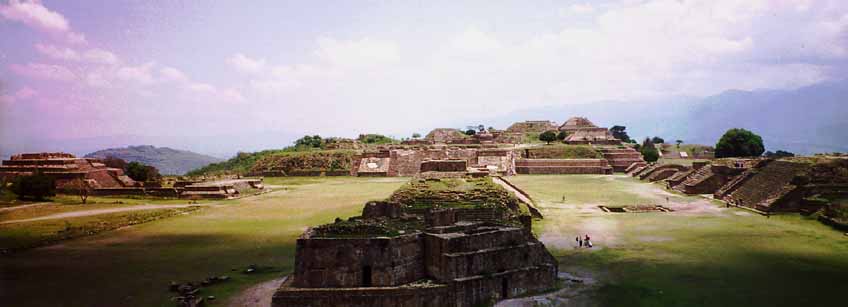Socioeconomic Inequality
Behind the quaint charm of Oaxaca are many problems rooted in the state history. For generations, Oaxaca citizens have been plagued by socioeconomic inequality.The majority of these people earn an inadequate wage and a very small minority earns a comfortable living. This poor majority has repeatedly protested this inequality while the rich elites hold them back. These elites do not want the change that the majority continually demands. It is mainly because of this inequality that Oaxaca is one of Mexico’s most underdeveloped cities and regions. In fact, Oaxaca’s quaint charm reflects this underdevelopment [35]. Due to Oaxaca’s perpetual poor economy, a large number of citizens immigrate to the United States every year. Oaxaca has one of the highest immigration rates to the United States from Mexico [36].
Photo by Mexico.us
Corrupt Government
Oaxaca has suffered from years of social and economic injustice. The region’s oppressive government has brought much of this injustice. More recently, Oaxaca citizens have been rebelling against the supposed corrupt and oppressive government of Ulises Ruiz Ortiz. Under his right-wing government, protesters have been abused, abducted, raped and even killed. This oppressive power demonstrated by elites has been the case for generations in Oaxaca [37].
Oaxaca’s history has been full of government oppression and this still seems to be the case today. In current reports, this repression is still present, despite years of citizen protest [38]. The Oaxaca teachers’ strike began in May of 2006 in hopes of receiving higher wages and other educational necessities. This protest added to the already present movements to rid of Oaxaca’s governor, Ulises Ruiz Ortiz, who, as stated earlier, is continually accused of being corrupt. It has been reported that both state and federal governments are still torturing, imprisoning, and killing the members and supporters of the Oaxaca People’s Popular Assembly, or the APPO. According to the International Civil Commission for Human Rights (ICCHR), many protesting Oaxacans continue to be detained and tortured by electric shock, physical aggression, burns and psychological torture [39].
Police Brutality
Much like the history of Oaxaca, women have been especially subject to mistreatment and inequality. It has been reported that many detained women have been physically abused or even raped. Some women have had their hair cut off and have been forced to remove their clothes and pose in embarrassing positions [40].
Police, sometimes dressed in street clothing, have often violently broken up peaceful protesting. These protests have been interrupted through the use of weapons and tear gas. Often, the police have arrested these civilians without any warrants. Many of these wrongfully arrested people have been denied the opportunity to a fair trial and defense lawyers. The ICCHR reports that 26 people have died in conflicts [41].
What's Happening Now?
Around January 2007, many of these protests ceased and a sense of normalcy returned to Oaxaca [42]. Despite this, many political and educational issues remain unsolved. The Oaxaca government is still very controlling and is limiting the rights and freedoms of its citizens. In an interview with James Daria, he explained to us that Oaxaca citizens have no way of communicating with the broad public. Due to government restrictions, citizens cannot even get on the radio or start a radio show to communicate with their fellow Oaxacans [43]. This can be very problematic for a public that is trying to unite and overthrow governmental elites. On top of these political problems, and despite fewer protests and strikes, many of the educational issues have not been solved.
Photo by James Daria
Due to the protests, strikes and riots over the past few years, tourism to this popular vacation destination has dramatically declined. Since these protests and strikes have declined in Oaxaca, tourism is beginning to trickle back into the area.
